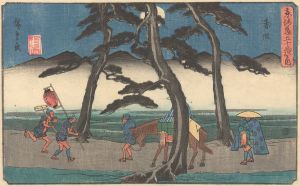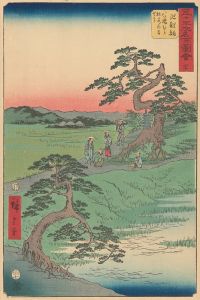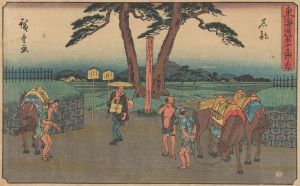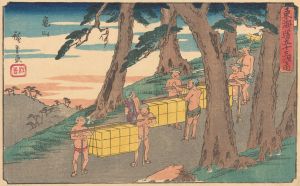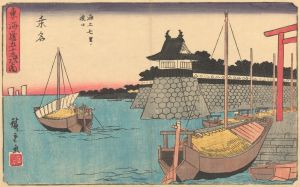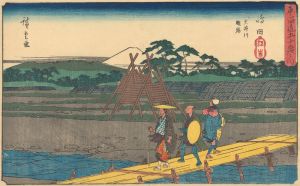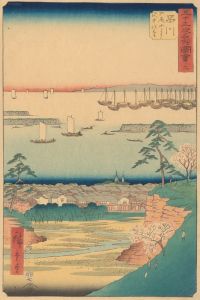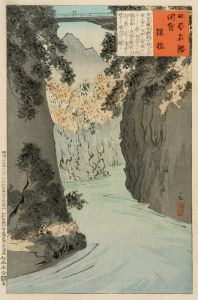
Arai
A hand-painted replica of Andō Hiroshige’s masterpiece Arai, meticulously crafted by professional artists to capture the true essence of the original. Each piece is created with museum-quality canvas and rare mineral pigments, carefully painted by experienced artists with delicate brushstrokes and rich, layered colors to perfectly recreate the texture of the original artwork. Unlike machine-printed reproductions, this hand-painted version brings the painting to life, infused with the artist’s emotions and skill in every stroke. Whether for personal collection or home decoration, it instantly elevates the artistic atmosphere of any space.
Andō Hiroshige, a prominent Japanese ukiyo-e artist of the Edo period, is renowned for his landscape prints and his ability to capture the transient beauty of nature. One of his notable works is "Arai," which is part of his celebrated series "The Fifty-three Stations of the Tōkaidō." This series, created between 1833 and 1834, depicts the scenic journey along the Tōkaidō road, one of the five major routes of the Edo period, connecting Edo (modern-day Tokyo) to Kyoto.
"Arai" is the 32nd station in the series and is known for its depiction of the Arai Barrier, a checkpoint established by the Tokugawa shogunate to control travel and trade along the Tōkaidō. The print captures the essence of travel during the Edo period, illustrating the daily life and activities of travelers and officials at the checkpoint. Hiroshige's work is characterized by its attention to detail, vibrant colors, and the use of perspective to create depth, which are all evident in this particular print.
In "Arai," Hiroshige employs his signature style to portray the bustling activity at the checkpoint. The composition typically includes travelers, samurai, and officials engaged in various activities, such as inspecting travel permits or resting. The background often features the serene landscape of the surrounding area, with distant mountains or the sea, highlighting Hiroshige's skill in blending human activity with natural beauty.
Hiroshige's "The Fifty-three Stations of the Tōkaidō" series was highly influential and widely popular during his time, contributing significantly to the ukiyo-e genre. The series not only served as a visual travelogue for those who could not undertake the journey themselves but also as a reflection of the cultural and social aspects of the Edo period. Hiroshige's ability to capture the spirit of the Tōkaidō road and its stations made the series a commercial success and solidified his reputation as a master of landscape prints.
The "Arai" print, like others in the series, was produced using traditional woodblock printing techniques. This involved multiple artisans, including the designer (Hiroshige), the engraver, the printer, and the publisher, each contributing their expertise to create the final artwork. The collaborative nature of ukiyo-e production was essential to its success and dissemination.
Hiroshige's work, including "Arai," continues to be celebrated for its artistic merit and historical significance. His prints offer a glimpse into the past, providing valuable insights into the landscapes, architecture, and daily life of the Edo period. Today, Hiroshige's prints are held in high regard by art historians and collectors alike, and they remain a testament to the enduring appeal of ukiyo-e art.






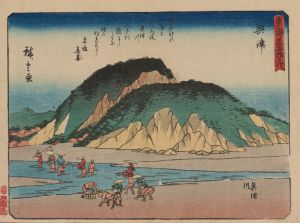

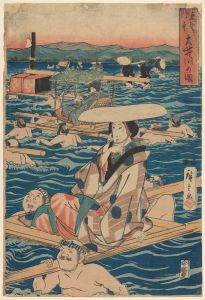
![Tora-no-mon-gai; Aoi Hill, Outside the Tiger Gate [Tora-no-mon]](/imgs/213040/s/ando-hiroshige-toranomongai-aoi-hill-outside-the-tiger-gate-toranomon-6629cde0.jpg)
